This weekend will see the running of the 92nd edition for what is to many, and myself included, the greatest endurance race on earth. The fabled, 24 hours of Le Mans. It is a race that I fell in love with from a very early age thanks to a illustrated book I bought at school Book Fair named simply ‘Racing Cars’. It drew me in and captured me from a very early age and would inspire many of my life choices that followed, from working on racing teams to picking up a camera in some instances.
A race not only against competitors across multiple classes, skill levels and speeds but against the track itself and more importantly than that… time. The old adage says ‘to finish first, first you must finish’ and that is very true when it comes to Le Mans. As seen in recent years, teams will be leading all the way up until the last few moments (or seconds) of the race only for a decision made hours earlier or a simple lapse in concentration have them pay dearly for it – an example being Toyota in 2016, who lost their outright win when their #5 car lost power and ground to a halt with a minute lead… because it had run out of fuel due to a miscalculation.
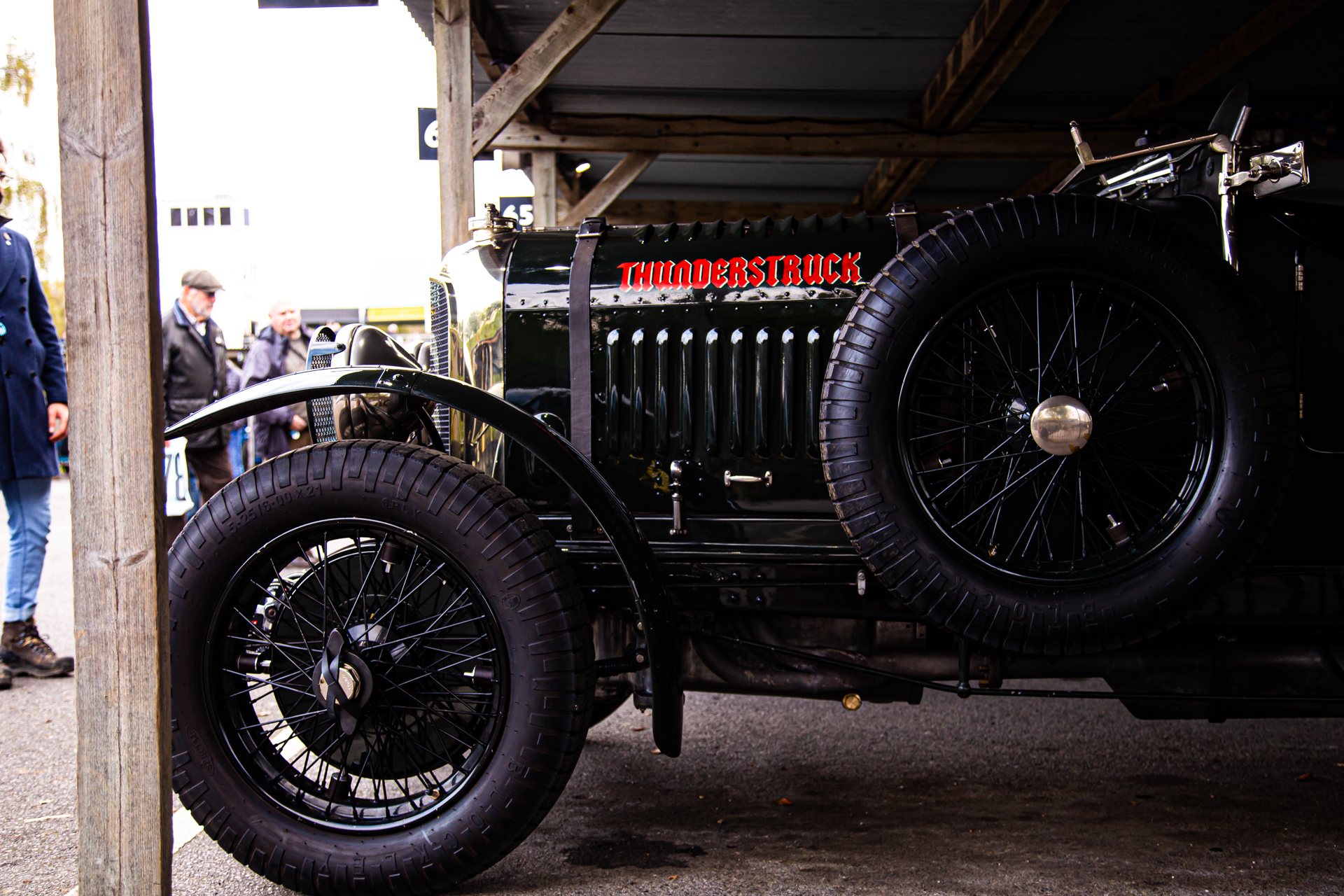
Every race creates a legacy or a story for each person that attends this weekend in the middle of France, some see it as every true petrol head’s pilgrimage – to the Devil’s roundabout.
What began as a simple street race in the early 1920’s has grown into an industry all of its own. With teams throwing everything they possibly have at a class or all out win on this one weekend in June. Famously, when the legendary W.O Bentley first heard of this mad-hat idea by a customer of his, John Duff, told him of a 24 hour long race in France he wanted a car prepared for he thought it simply wasn’t possible. But with a sense of duty to his customer, W.O attended the race as support and supplied his test driver Frank Clements to act as a 2nd driver. After this first race in 1923, Bentley would become one of the names so entrenched in the early history of this legendary race which survives until this day.
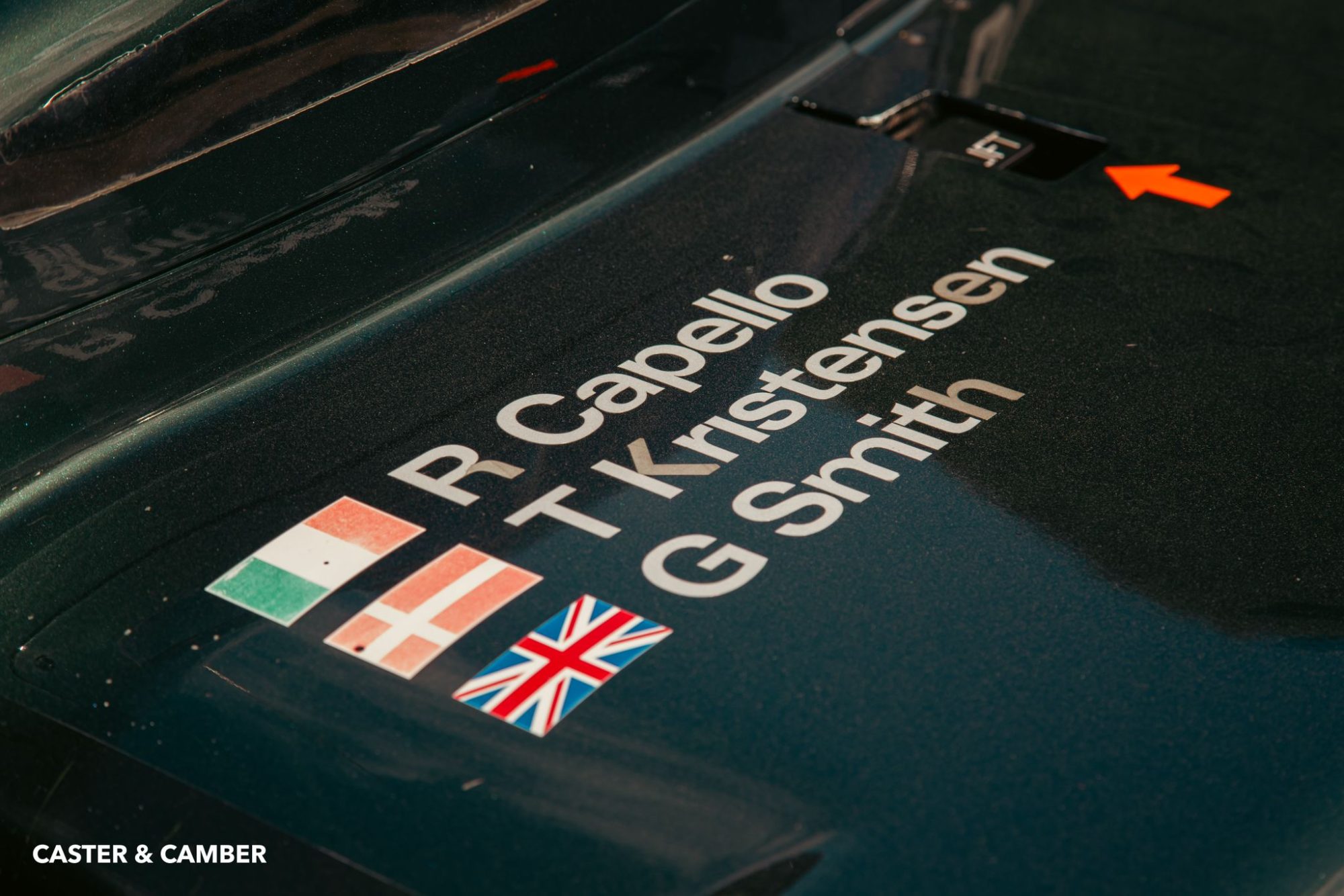
Each decade has held its heroes. With the introduction of new classes, formats, driving styles, engines and rules it has allowed for certain manufacturers to dominate and ultimately drive other teams to push harder and harder – Jaguar vs Mercedes, Ford vs Ferrari, Sauber vs Porsche vs Jaguar, Toyota vs Peugeot, Audi vs everyone else… you get the picture. It has also been a sight of much tragedy and loss, but within the motorsport world its an accepted risk but in 1955, a true tragedy occurred which involved civilian spectators and would ultimately lead to Mercedes withdrawing from competition for the decades which followed and because of both of these aspects, the loss and the triumphs it has pushed the development of numerous safety systems in both racing and road applications.
It has also helped teams pushed the boundaries of performance (and endurance) which have found its way into the cars we drive everyday such as tuning for both performance and for fuel efficiency which came about after a rule change in the 1970’s limited engine size due to the fuel crisis and actually runs up until today with cars only being allowed to use a certain amount of fuel over a certain amount of time (the same also applies to tyres and tyre technology).
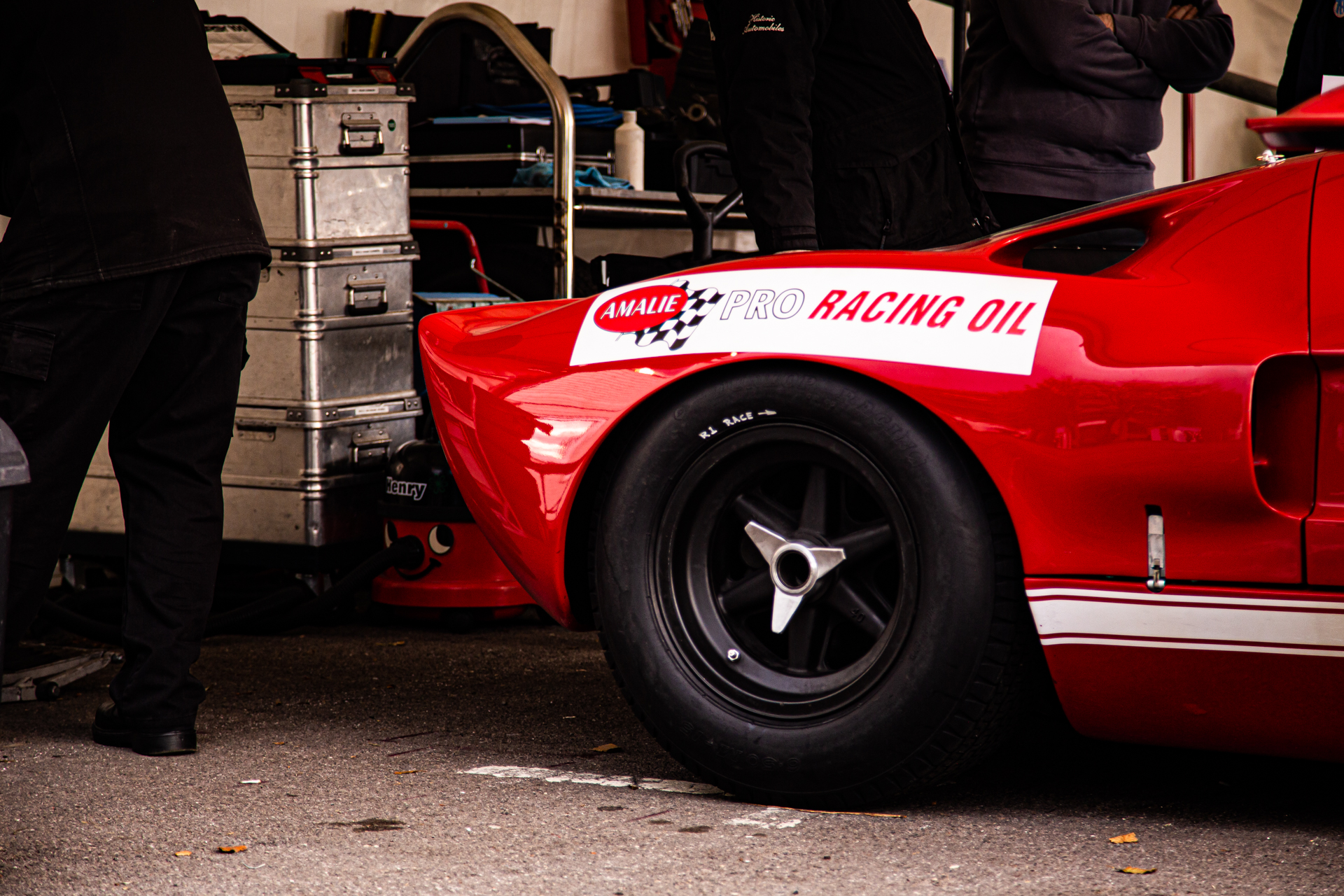
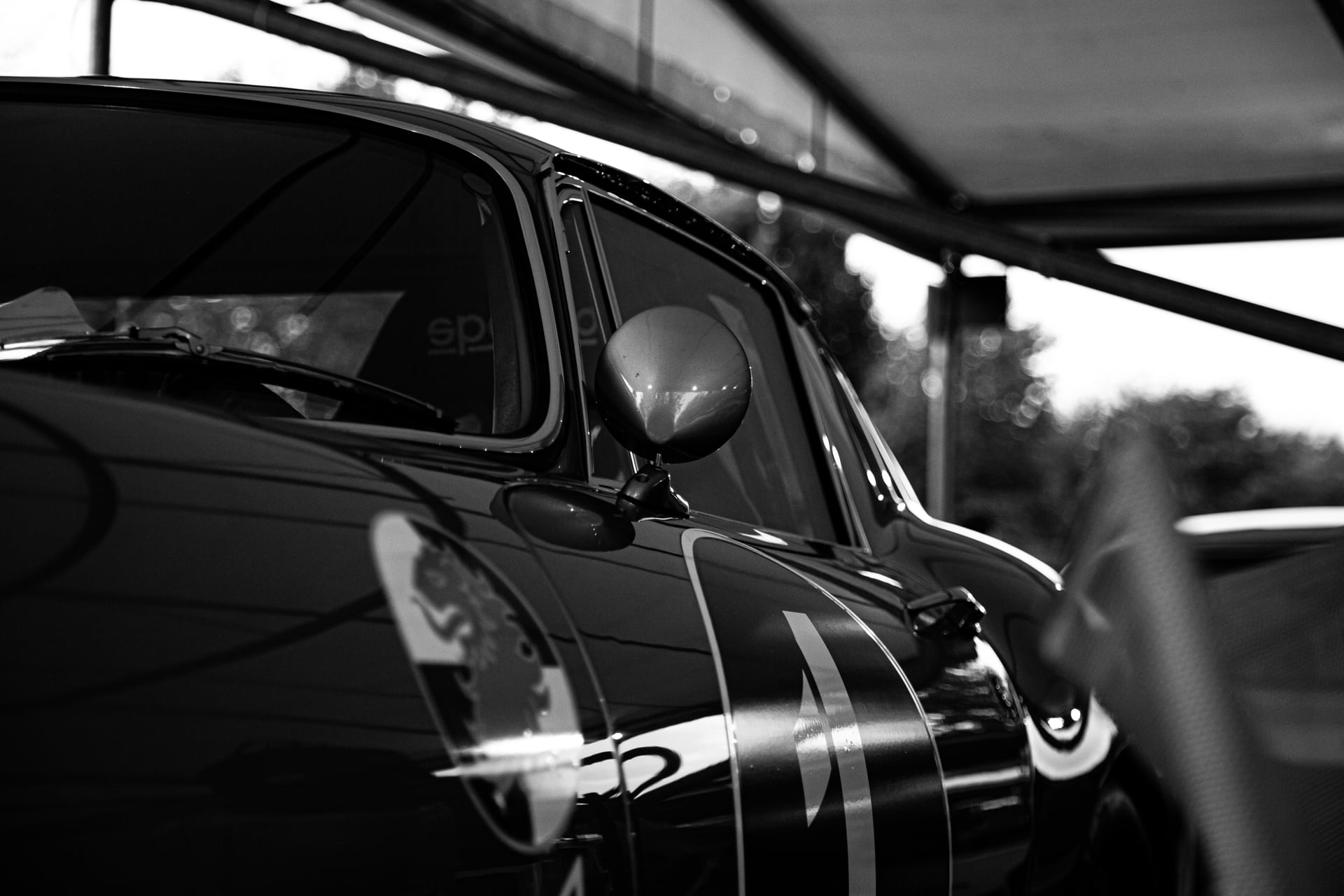
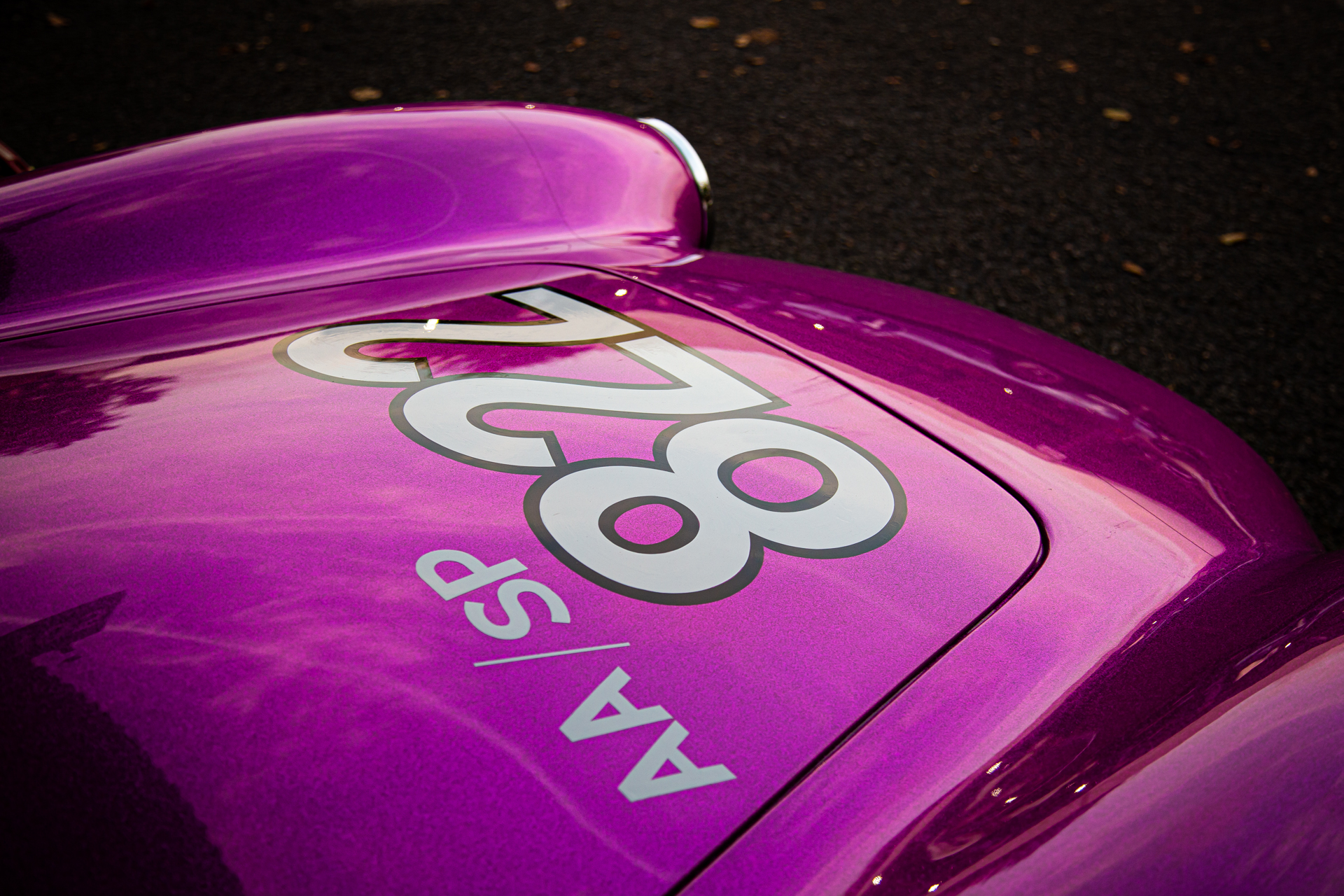
The only breaks and delays in the races history have been due to world events entirely out of the control of drivers and teams. The race of course didn’t run from 1940 and would only begin again in 1949 due to the 2nd world war and the rebuild of the automobile industry across the globe needed to form the competition. And then during those almost surreal months/year of the COVID-19 pandemic where the race was postponed until September of 2020.
This year, the 2024 race, will see the introduction to several new manufacturers across the competition as well as a new class – GT3. After the former GTLM/GTE designations ended last year, the new cars for this years race included the new Ford Mustang GT3 under the wonderfully competitive and steady hands of a Ford Racing/Dempsey Proton Racing partnership (Ford formerly ran their Ford GT at Le Mans and secured a class win on their debut with the car so… no pressure). The highest echelon of the paddock of course is the Hypercar category, a selection of hybrid and non-hybrid all out racers makes up this clique with manufacturers such as Porsche, Cadillac, Glickenhaus and Ferrari (who would take both the Le Mans win in 2023).
Although the drivers have become god-like, think of Kristensen, Ickx, Miles, Barnato, Turner, Schneider, Conway, Koboyashi, etc. Their machines have also past into folklore for a plethora of reasons. This mechanical beast mentioned in hush whispers and held in such high regard that they are treated sometimes like the most priceless pieces of art in the world but at their core, they were build for one singular purpose – to be the fastest and most well-built piece of machinery in France on that single beautiful summer’s weekend.
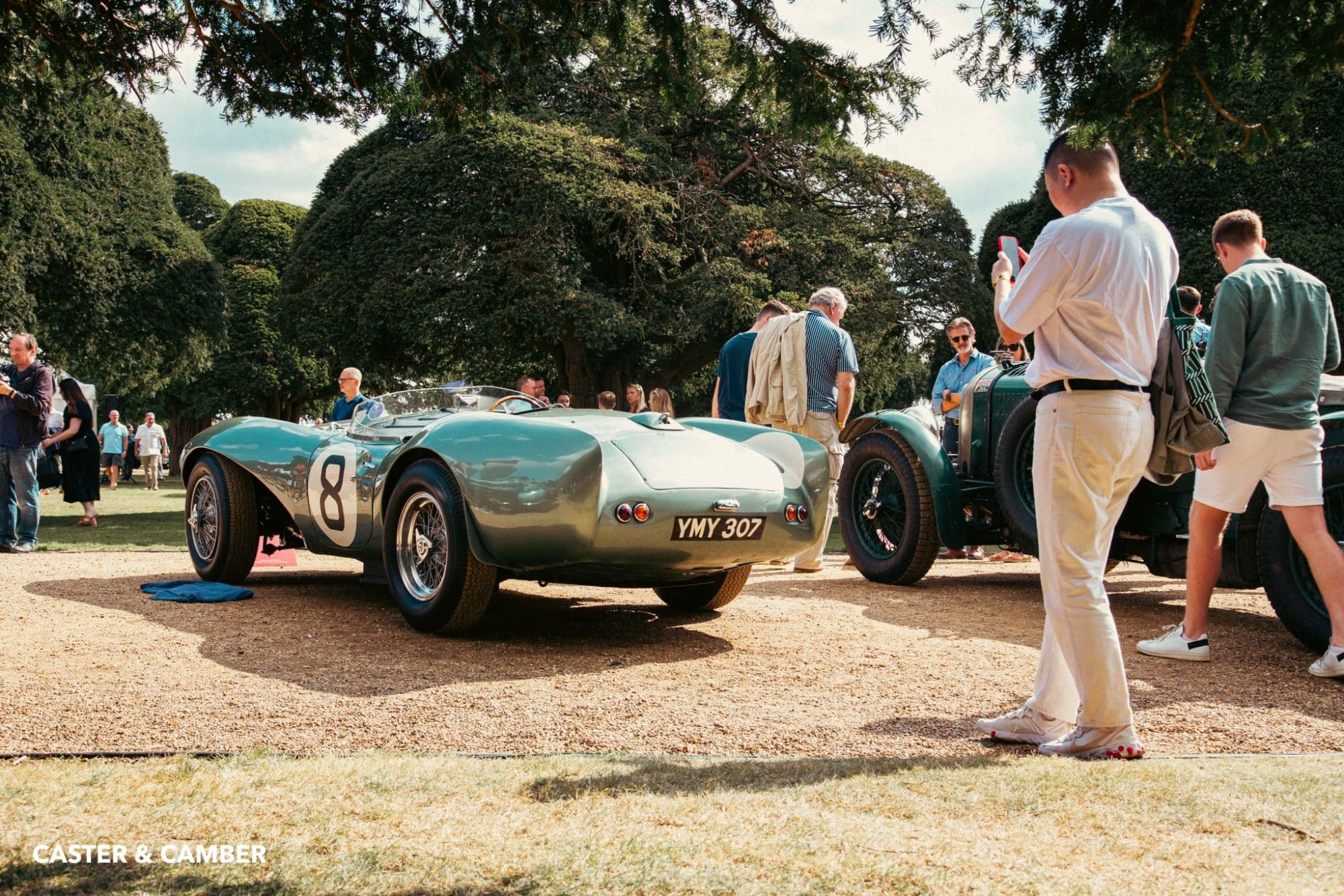
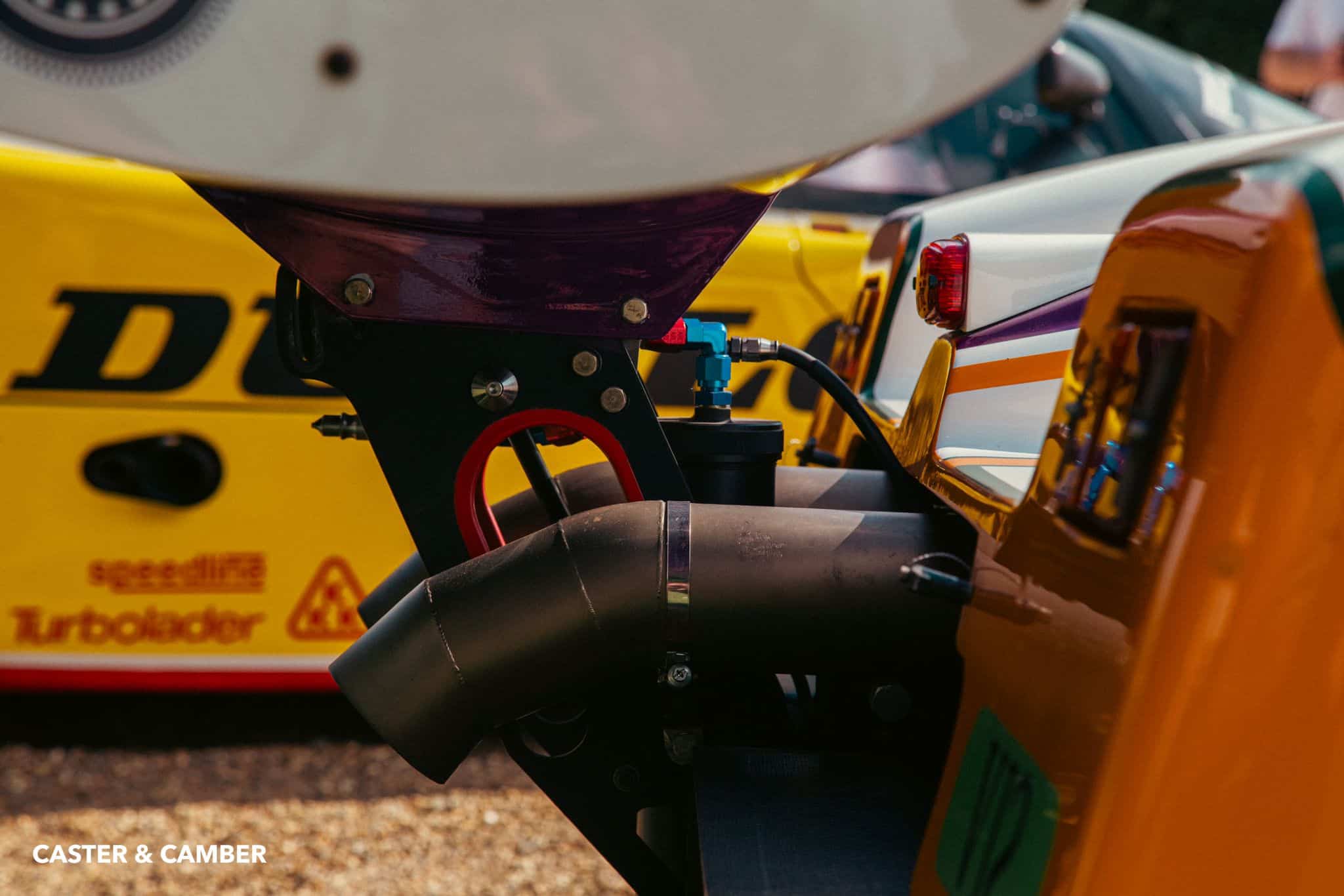
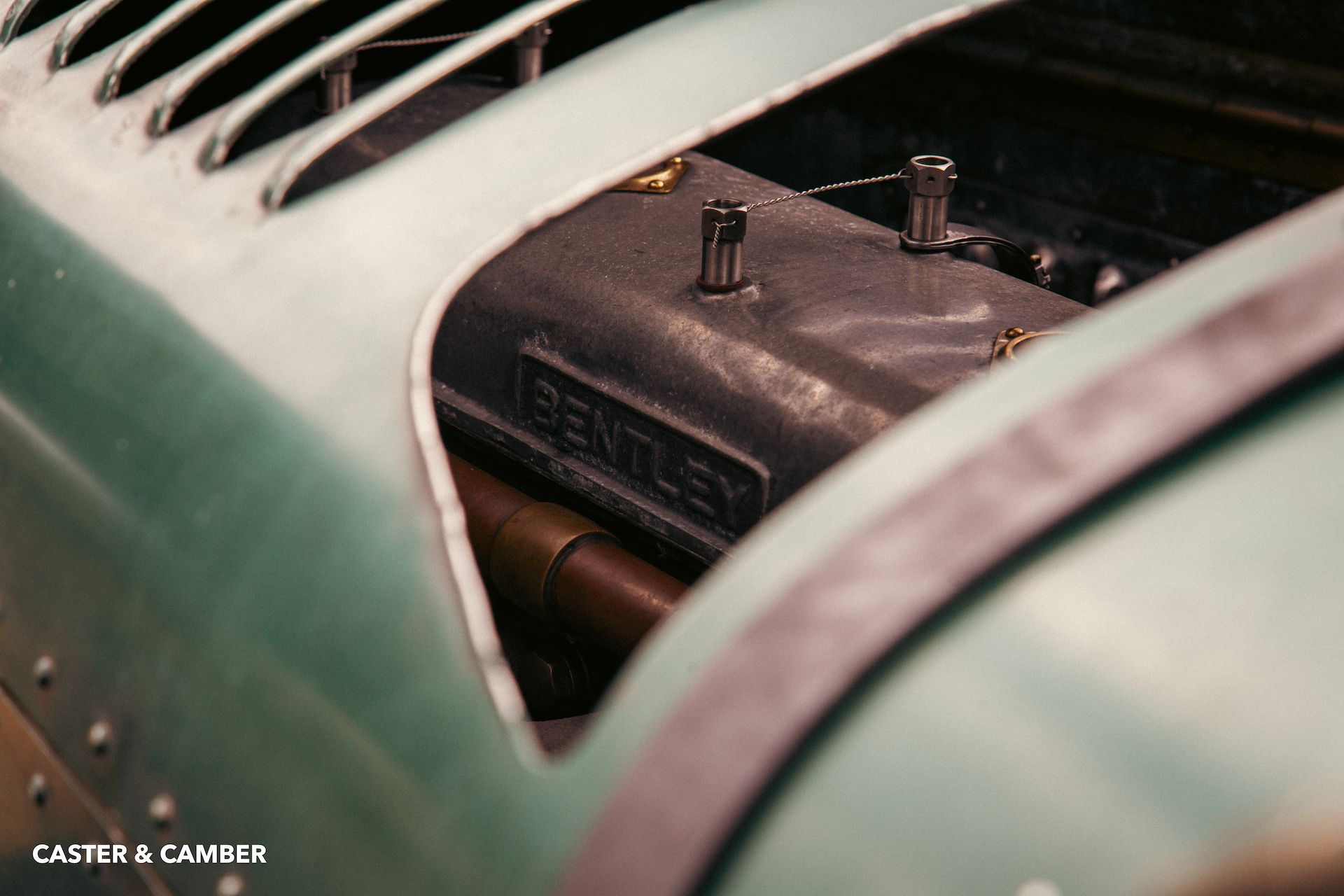
I find myself in a wonderful, almost otherwordly, fortunate position where my job is to be surrounded with classic cars every day of my working life. Photographing and capturing what is only a snapshot of the lives that these machines have led, and its a privilege that I sometimes have to pinch myself to bring it all back that it is indeed real. Those of you who know me, or those who have met me at events, know that I could talk the hind legs off a horse about automotive history and its because of these machines…
Being that I work for a classic car company, being Bridge Classic Cars – I thought it best to wind back the clocks and ride that wave of nostalgia into the shores of yesteryear by taking a look at some of the racing cars which have inspired so many.
It is a rare chance to get up close and personal with these tremendous pieces of history. Many of them are cordoned off from the public and only to be gawked at in the pages of a magazine who have been allowed to photograph the car for 20 minutes. But, thankfully, there are still places for us who fall to our knees at the alter of octane and pray to the gods of speed. Wonderful events such as Goodwood Revival, Members Meeting and Festival of Speed, Silverstone Classic, Masters Historic, Dubai GP Revival and so many more where you can see these cars being used at a percentage of their original anger and chaos, but well within their limits. Many of the cars are seen statically, and most recently (last summer) I got to spend a wonderful afternoon with my dear old Dad at one of the best I’ve been to and surrounded by a class of racing cars which is a very small, select and special group – Le Mans Winners.
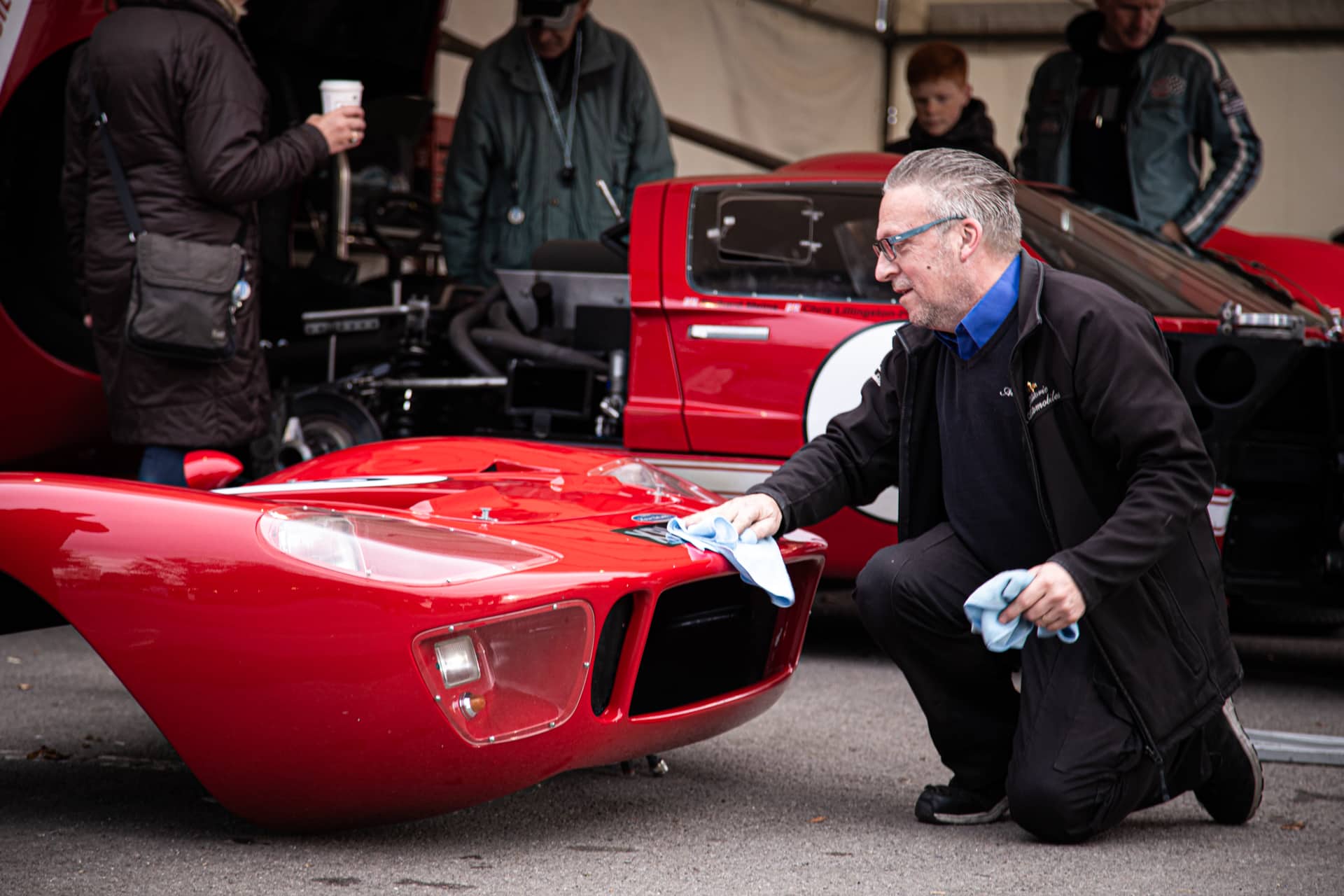
The Concours of Elegance at Hampton Court Palace is a wonderfully, eclectic affair. At it’s core, its a car show much like the ones which stretch across this country during the dry months of the year – but like we mentioned, this one contains some of the greatest pieces of machinery ever built but we’re going to talk about the Le Mans winners which formed the welcoming committee as you walked through the beautiful lime arches which opened onto the South Lawn Gardens at the palace.
We began with the famous motto about winning at the beginning of this piece, well each one of these machines stands as a testament to these words and sentiment. Some of them, multiple times.
Let’s begin at the start and go through the timeline of these Le Mans Winners history.
It’s 14th and 15th of June 1924.
Following from the previous years triumph, a 4th place overall but more important finishing of the race, W.O Bentley had decided to fully commit to the race in 1924 with what would be Bentley’s first factory team effort in the shape of a beautiful black 1924 Bentley 3-Litre, known as ‘Old Number 8’ and so began with story of the legendary ‘Bentley Boys’.
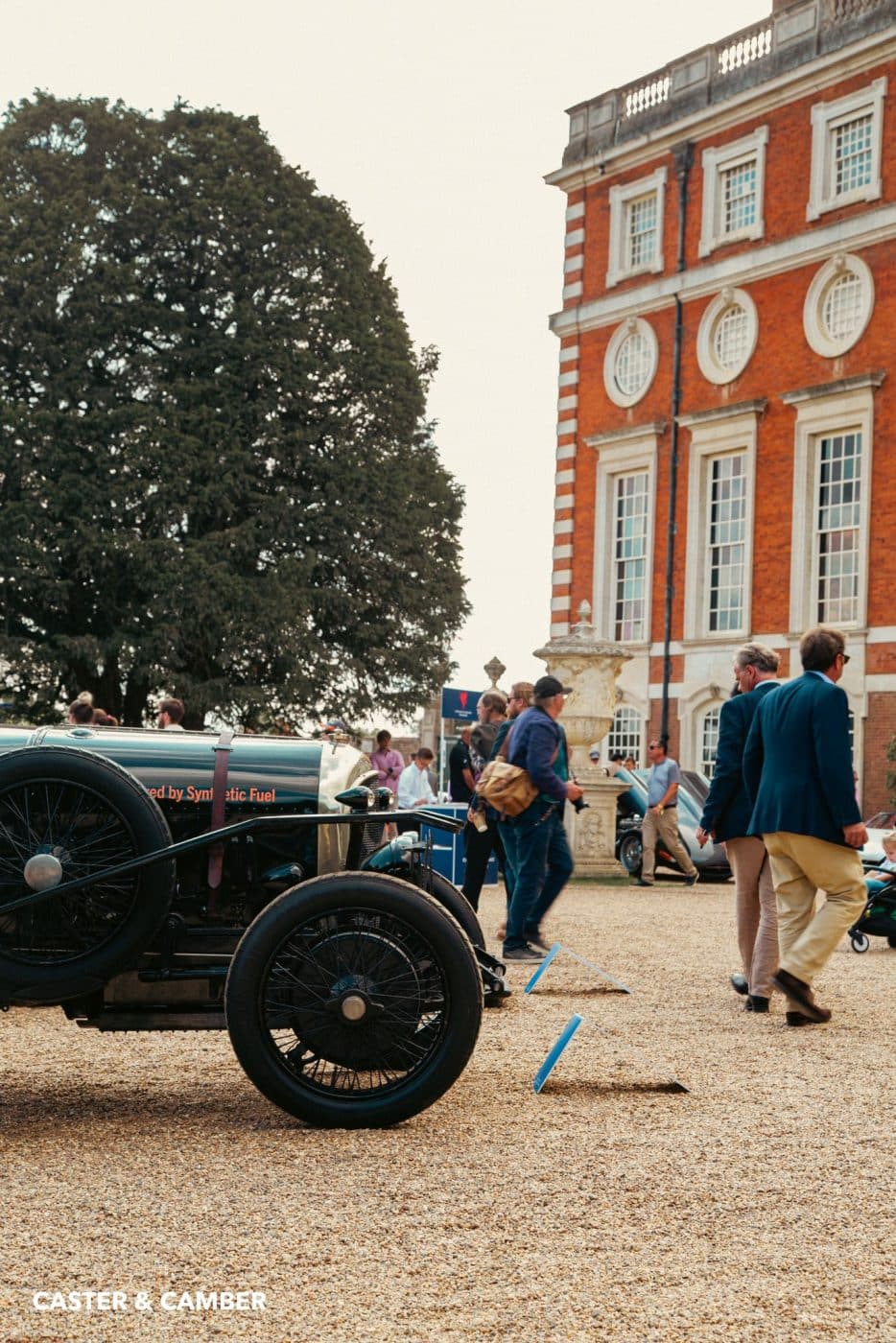
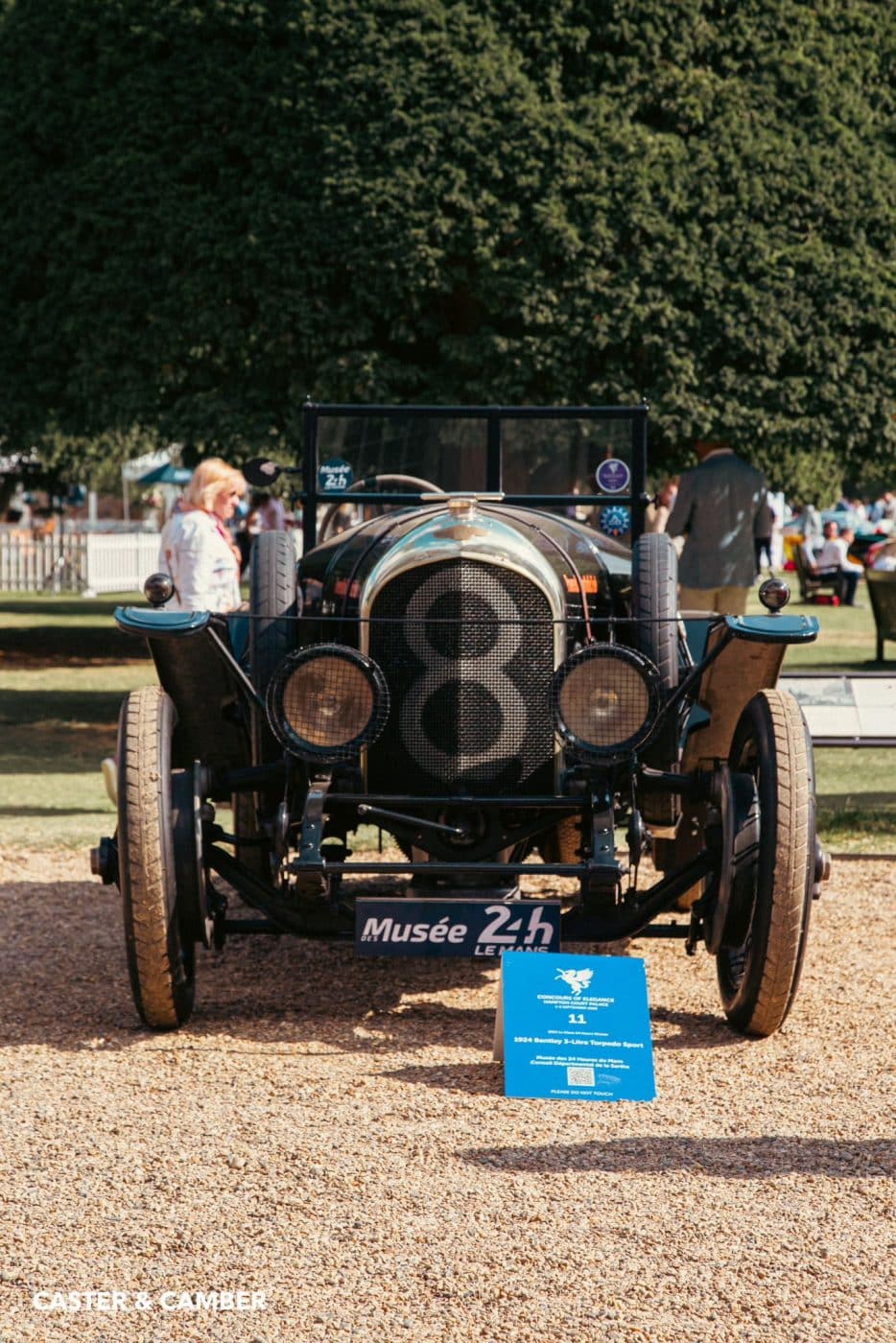
The car had been prepared at Bentley’s Cricklewood works for the race. A majestic, simple and rugged 3-litre tourer was chosen and been fitted with four-wheel brakes, mesh covered headlights and a wrapped fuel tank to protect from debris along with numerous other upgrades for the cars drivers, Duff and Clements from the year before. Famously during that years race, the car was sabotaged by a rival team and resulted in an overly long pitstop for the car but this didn’t both ‘Number 8’ who would take the flag in 1st place and cement the Bentley name into the winners circle of what would become the worlds toughest race.
This car would begin the run of famous Bentley Le Mans wins, taking 5 trophies between 1924 and 1930 culminating eventually with the cars spiritual successor taking the crown in 2003… more on that later.
The formula of a tough, reliable and simple car would form the basis of champions for the next several decades but in the early 1950’s, this would change somewhat.
After being somewhat decimated and punished following the second world war, Mercedes would look back to move forward and set the stage for their rise from the ashes of worn torn Europe. Before the war, the ‘Silver Arrows’ would dominate Grand Prix racing across the continent and also be part of the highest of class of luxury, style and engineering.
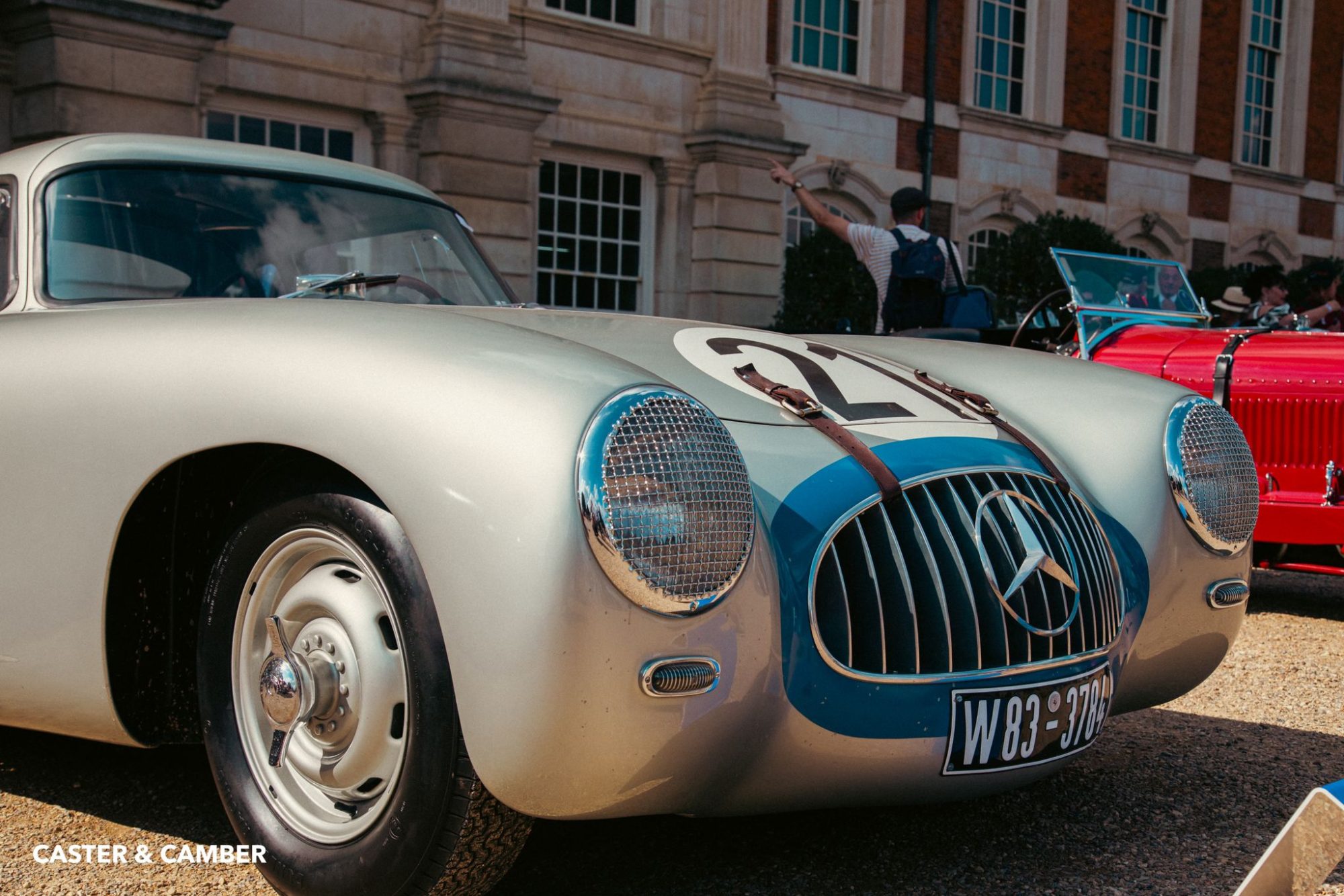
In 1952, Mercedes would return to France with their W194 300SL, the car which would be the genesis of the iconic Gullwing road cars. The W194 was the first German car to win the 24 hours of Le Mans at the 1952 race thanks to its exceptionally strong but light tubular steel spaceframe and lightweight aluminium bodywork. Paired with a simple but punchy 3-litre straight-six to supply it with the performance it needed.
Hermann Lange and Fritz Reiss were given driving duties for the now legendary ’21’ which would cross the line first followed by its sister car for a one-two finish. Just 10 W194’s were ever built and ’21’ was the most successful and prolific of them all.

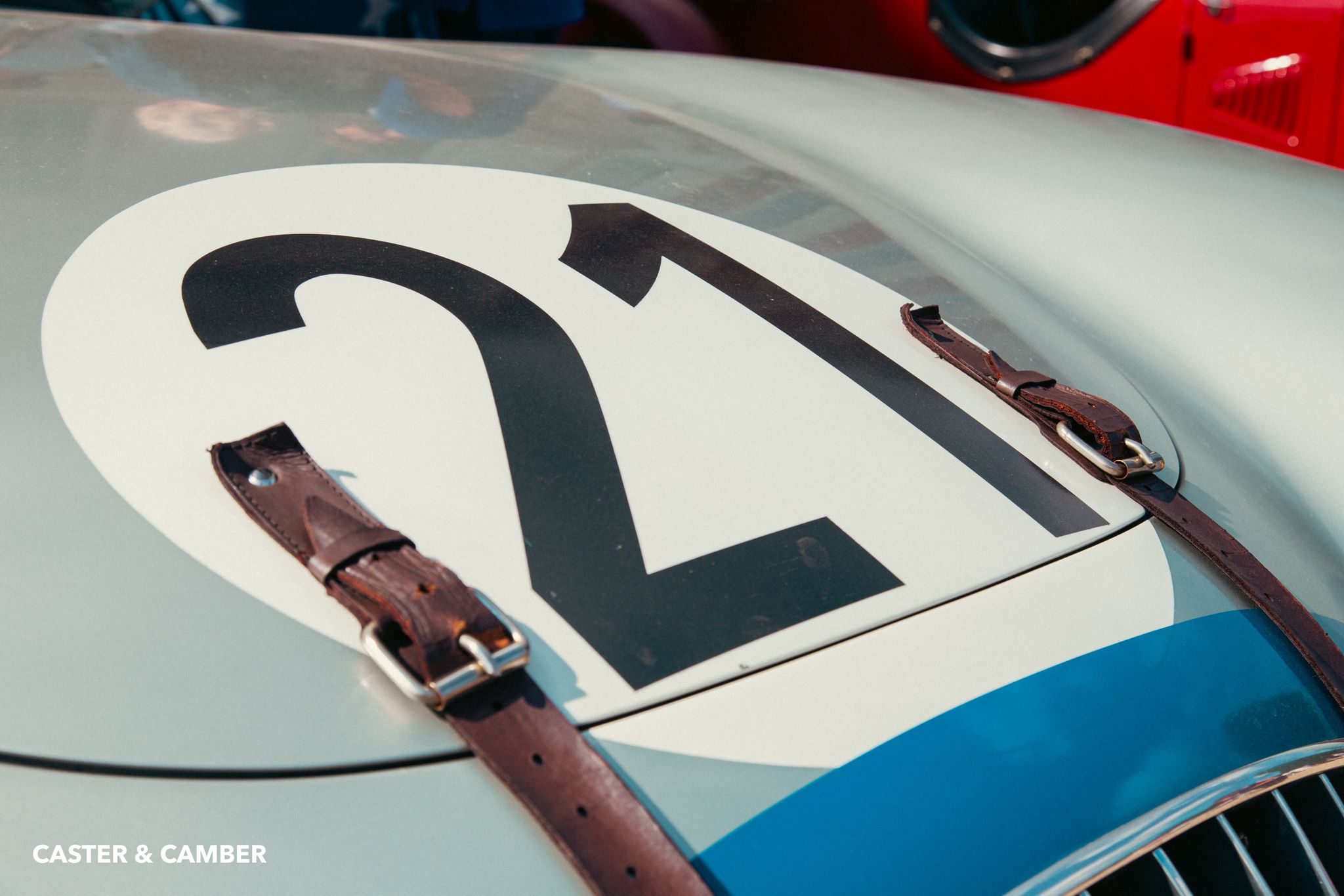

Following the horrific events of the 1955, Mercedes would withdraw from factory competition efforts for a long time afterwards.
The greatest leaps in technology, design and performance would occur over the following decade. The introduction and rudimentary understanding of aerodynamics would begin to play a role in the sport, whilst progress in braking, tyre and safety equipment would go to stake a claim in the 1950s and 1960s being the ultimate time in sports car racing.
Especially the early 1960’s with cars such as the 1963 Ferrari 275P.
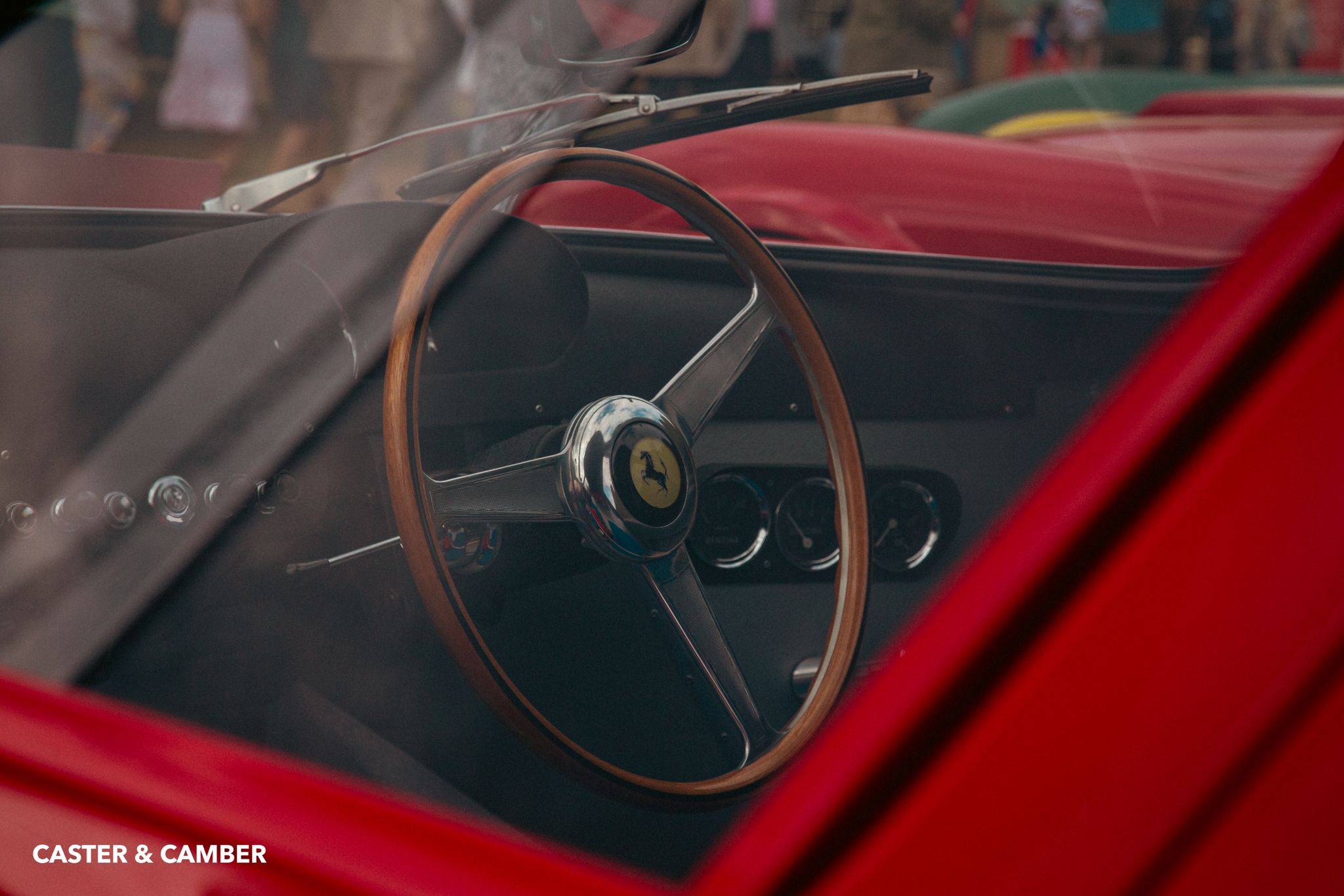
Since his time with Alfa Romeo, Enzo Ferrari would have his eye on Le Mans. The ultimate proving ground for a manufacturer and perfect place to advertise your companies prowess as a sports car and racing car builder.
In 1963, the 275P would be Maranello’s offering to the speed gods. A radical departure from the norm, the mid-engined V12 car was put in the hands of factory drivers Bandini and Scarfiotti (both of whom sadly would not see the end of the decade) who took the car, which in 1963 was actually a 250P, to its first victory at the 1963 running of the race. They won the race by an incredible 16 laps (or 125 miles if anyone is interested) with the car sporting a 3.0-litre ‘Testa Rossa’ (Red Head) V12. The 250P was actually a development of the 1962 246SP… but in June of 1964 the paddock would see a familiar face once again. The sight of the iconic Cavallino Rampante, but this time much more angry.
The 1964 car was taken back to the factory and reworked, this time with a 3.3-litre V12 and being piloted by Vaccarella and Guichet. That year, the car would set a distance record at Le Mans covering 2917.5 miles at an average speed of 122.2mph across the 24 hours, and giving Ferrari they’re first back to back Le Mans wins. This was in fact, the last time that the Scuderia would win the top level of Le Mans until 2023 the 275P’s great, great grand daughter’s the trio of 499P’s crossing the line in formation.
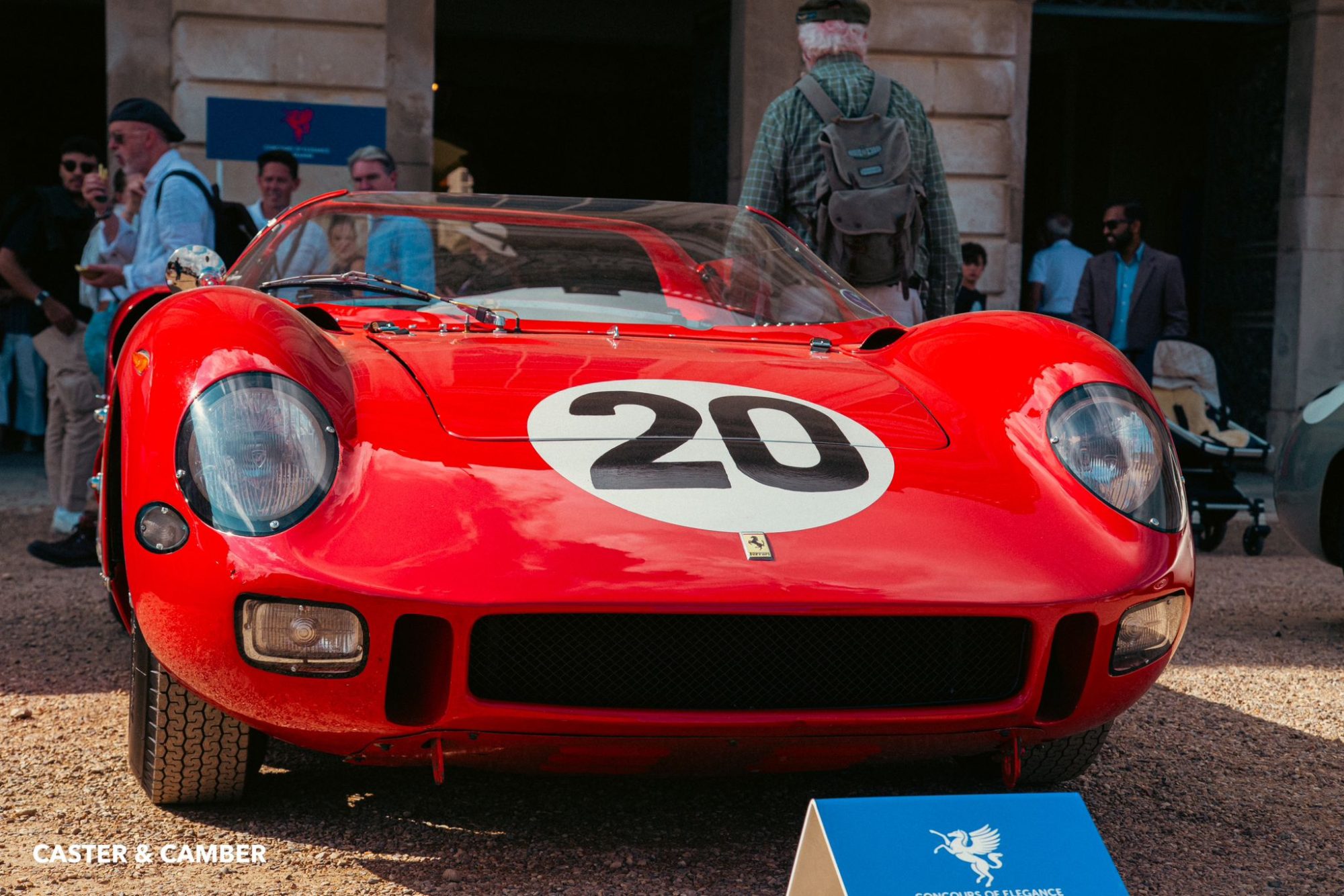

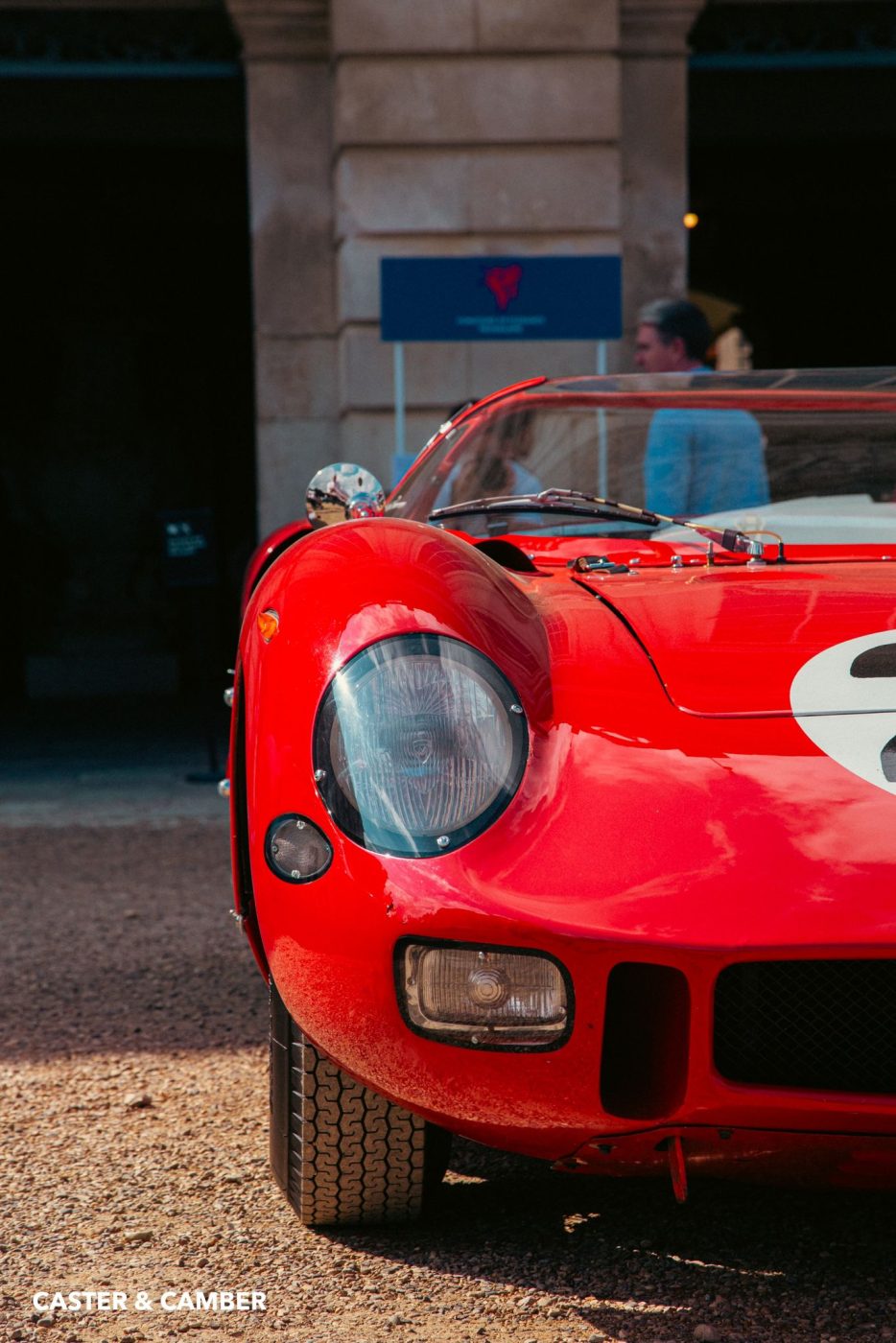
The 1960’s would see big changes at Le Mans. It now wasn’t a gentlemanly fight, it was the pride of nations and the future of manufacturers resting solely on the race. Famously depicted in the recent film Ford Vs Ferrari, the battles for supremacy didn’t entirely come down to luck or circumstance but rather the might of a pen on a checkbook and the skill of the driver.
Ford would win Le Mans in 1966 and 1967, as a factory team. Originally the cars had run in 1965 but due to Ford management interfering with the set up of the cars from the team principals none of them survived. I won’t go into the entire history of the GT40 programme (believe me I could) but it’s worth looking at the most successful GT40 at Le Mans out of all of them, Number 6.
It’s real name is actually Chassis 1075.
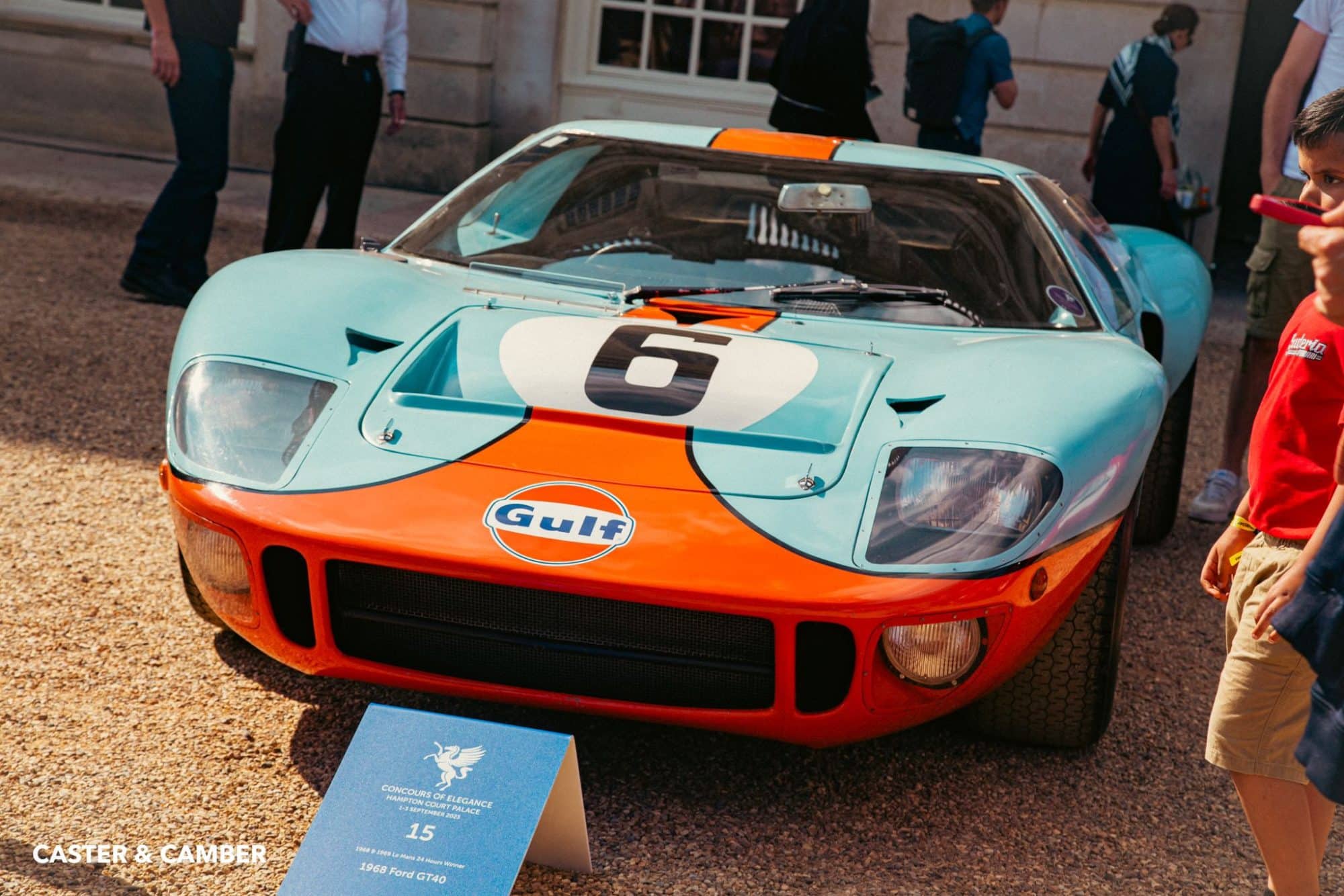
Yes, that livery… These car’s actually had nothing to do with Ford. The factory GT40 effort had been stopped in 1967 after the ‘J’ cars but in 1968 John Wyer of JW Automotive Engineering (with the backing of Gulf Oil) would field their newly built GT40, in full Mk1 spec, to take on a field of Porsche’s with the superb pairing of Pedro Rodriguez and Lucien Bianchi behind the wheel, both of them masters when it rained and at that point in history there was a saying ‘it will always rain at Le Mans’.
Thanks to their expert car control as well as the GT40’s rugged mechanicals (and knowing what broke on the Mk1’s in 1965) the GT40’s would pick off their rivals throughout the race. By the end of the 24 hours as the flag fell, the GT40 and its team were winners.
But in 1969, 1075 would come back and do it all over again. This time with the timeless pairing of Jackie Oliver and Jacky Ickx who took it all the way to the finish line in second place… right up until the final lap when they would snatch the lead away from Hans Hermann in a factory Porsche 908 just before the line giving 1075 (number 6) as well as the team their first taste of Le Mans success, and they would be back very soon with a different car to challenge it the following year.



As the 1970’s dawned on the racing horizon, the cars themselves would change drastically. Their styling becoming more alien than elegant. Wings, intakes, difusers, splitters and open cockpits would play a pivotal role in this decade of top level motorsport with the introduction of the Group 5 rules.
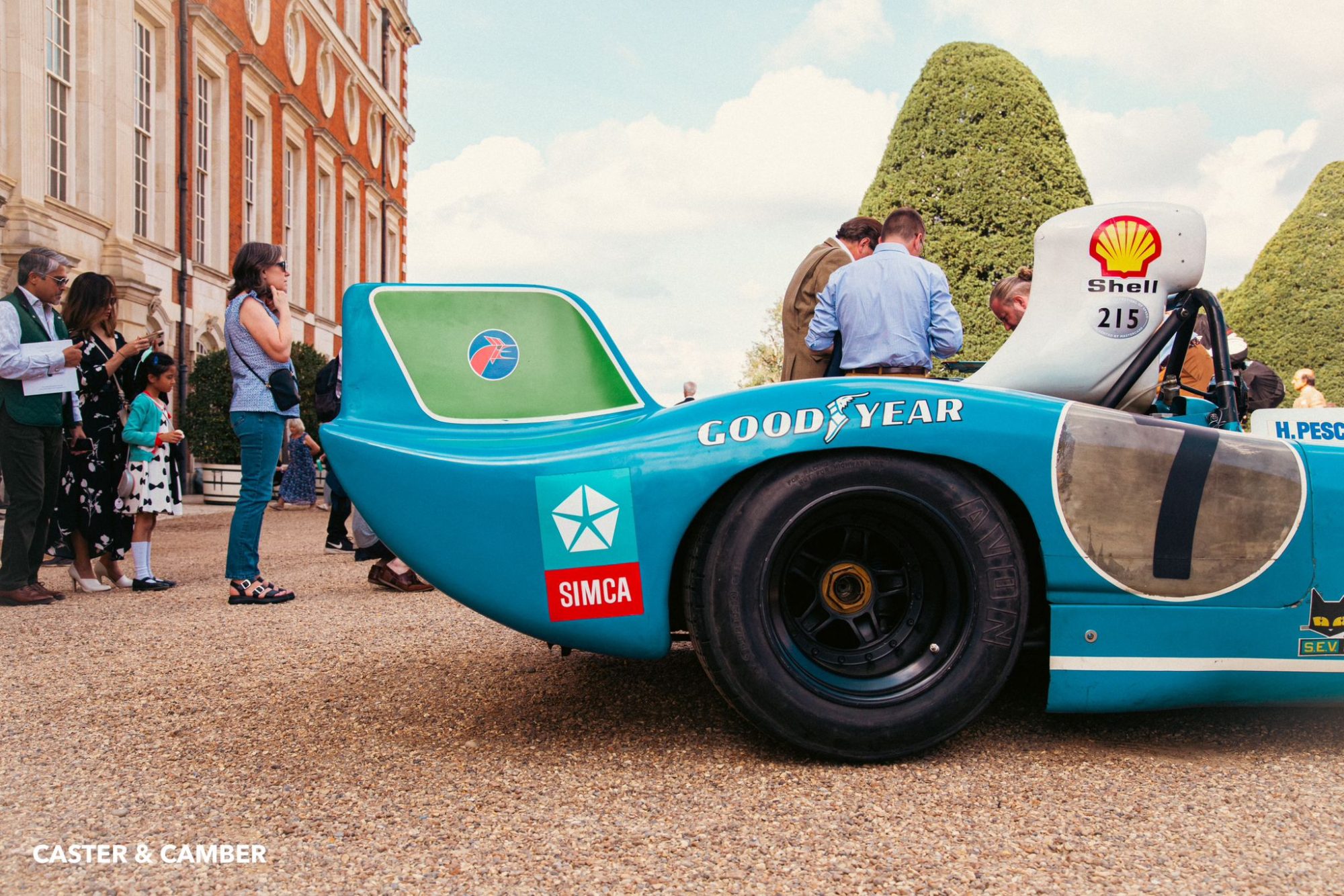
One of the most celebrated and revered names in racing at this time was Matra-Simca. Beginning in 1972 as the MS670, this open cockpit prototype was fast out of the box. In 1973 and 1974, the car was re-engineered and upgraded to make it more and more competitive against its rivals which saw its performance under the strict Group 5 rules as a challenge to be pursued. In both of those seasons (’73 and ’74) the car would take first place at Le Mans, ‘taking the double’ as it was so called.
Driven by the French dream team of Henri Pescarolo and ex-Porsche factory driver Gerard Larrousse, the MS670 would go on to prove that it was truly a force to be reckoned with taking not only the 24 hours of Le Mans but also the manufacturers championships in both of those years too. In 1975 however, they wouldn’t contend the title. Choosing instead to focus on road car production.
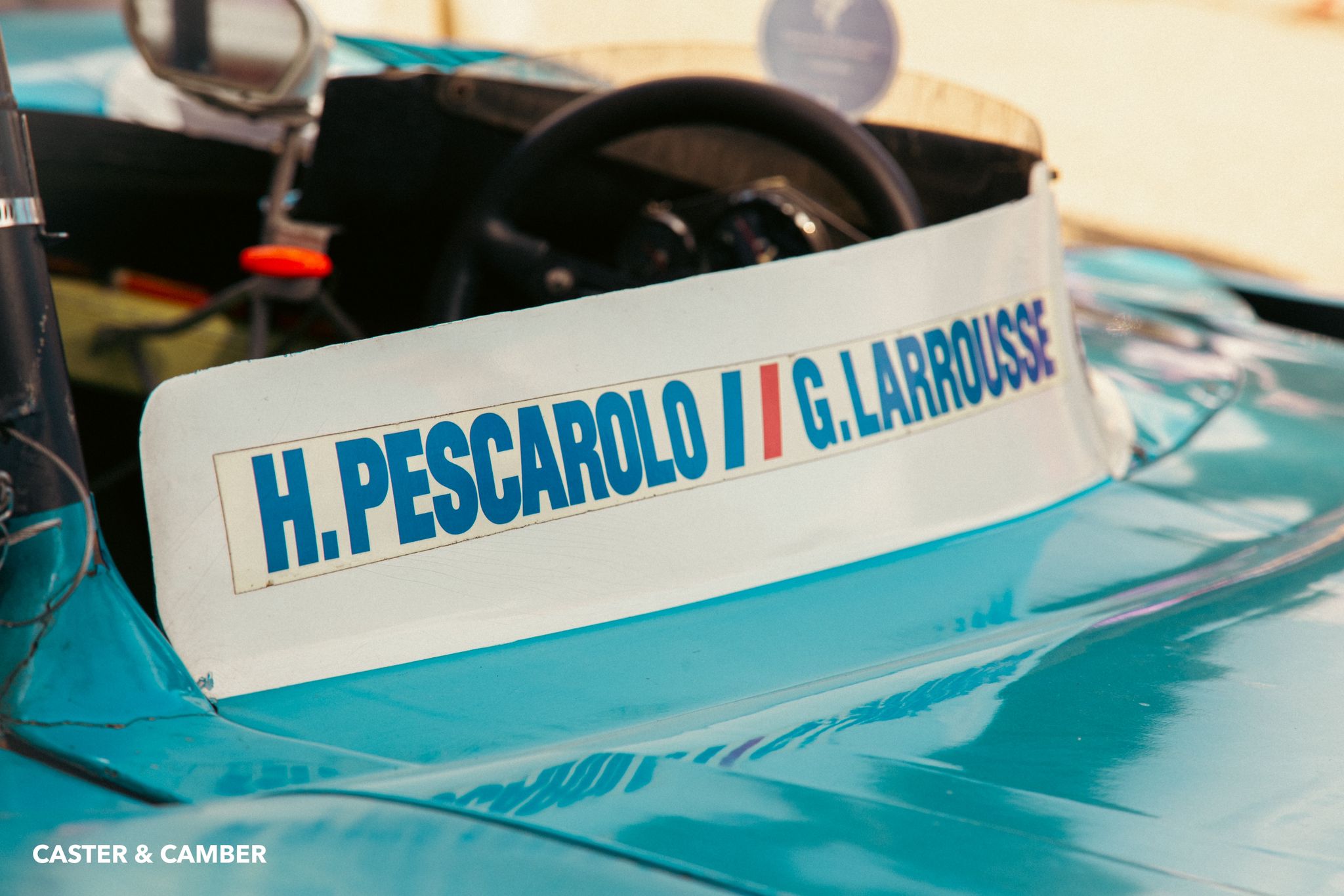
The 1970’s would be a beautiful decade for native teams. Beginning in the 1970’s with Matra-Simca but towards the end of the decade, it would also be a local french team that would contend the title for the Devil’s Roundabout.
The 1979 Rondeau M379B was a curious machine. This car holds an interesting distinction in that it is the only car to have won Le Mans with a driver/builder (think McLaren or Brabham taking their Formula 1 titles) in 1980. A local to Le Mans, Jean Rondeau would pair himself with compatriot Jean-Pierre Jaussaud to take their Group 6 car to all out victory behind the wheel of his creation. The car itself was a prototype built and developed by Jean Rondeau but powered by a full-blooded 3.0-litre Cosworth DFV mounted inside the closed cabin fibreglass, aluminium and steel racer.
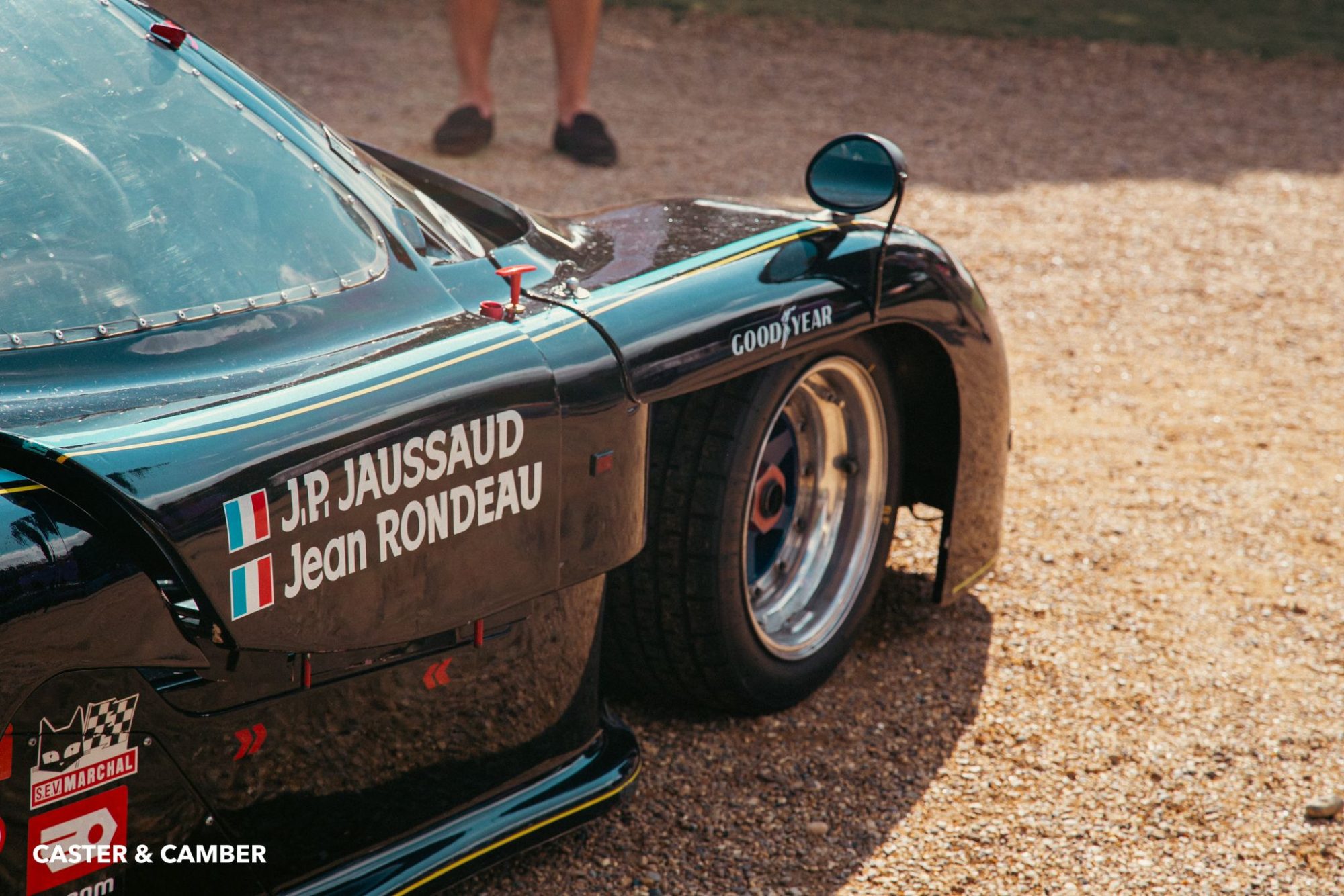
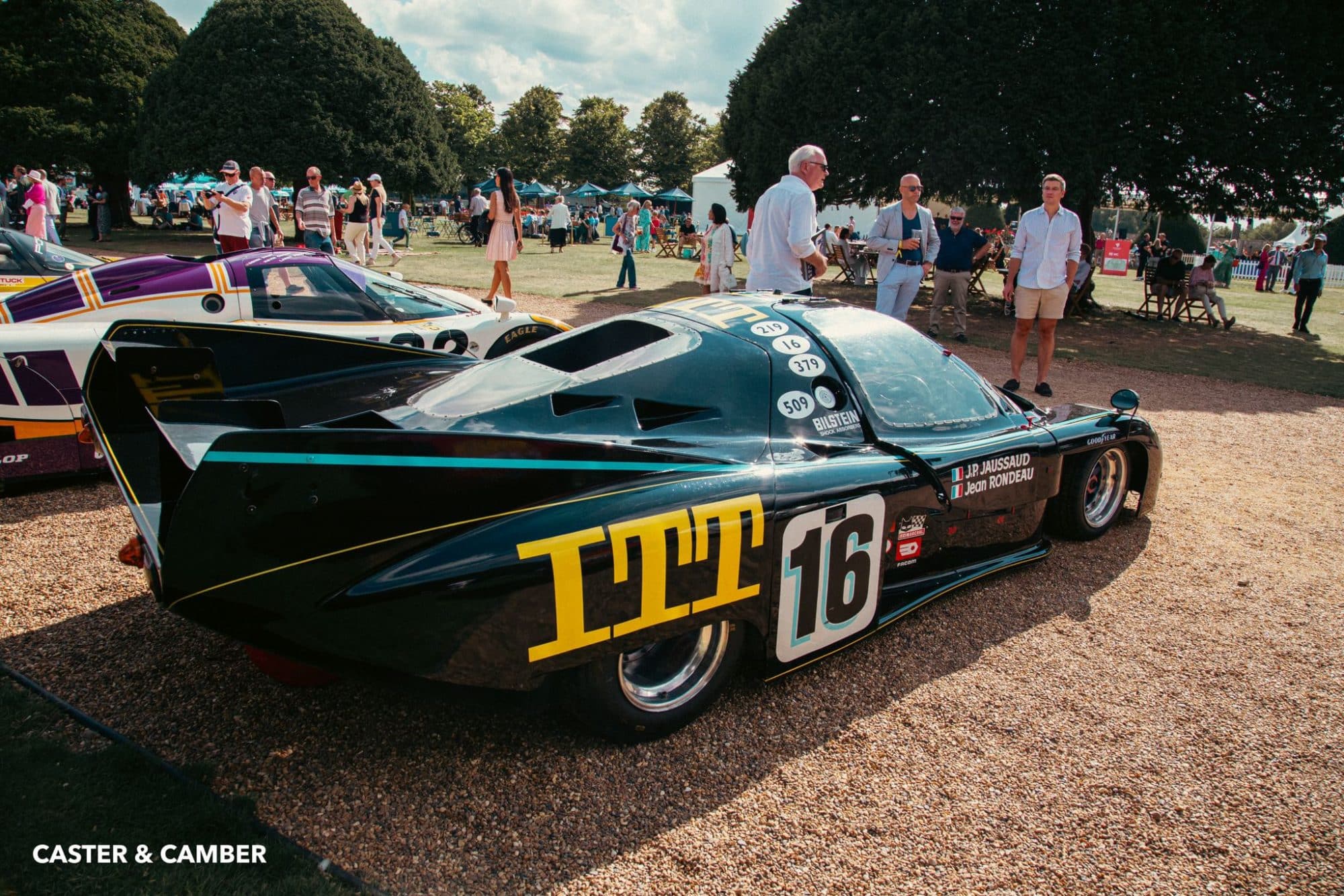
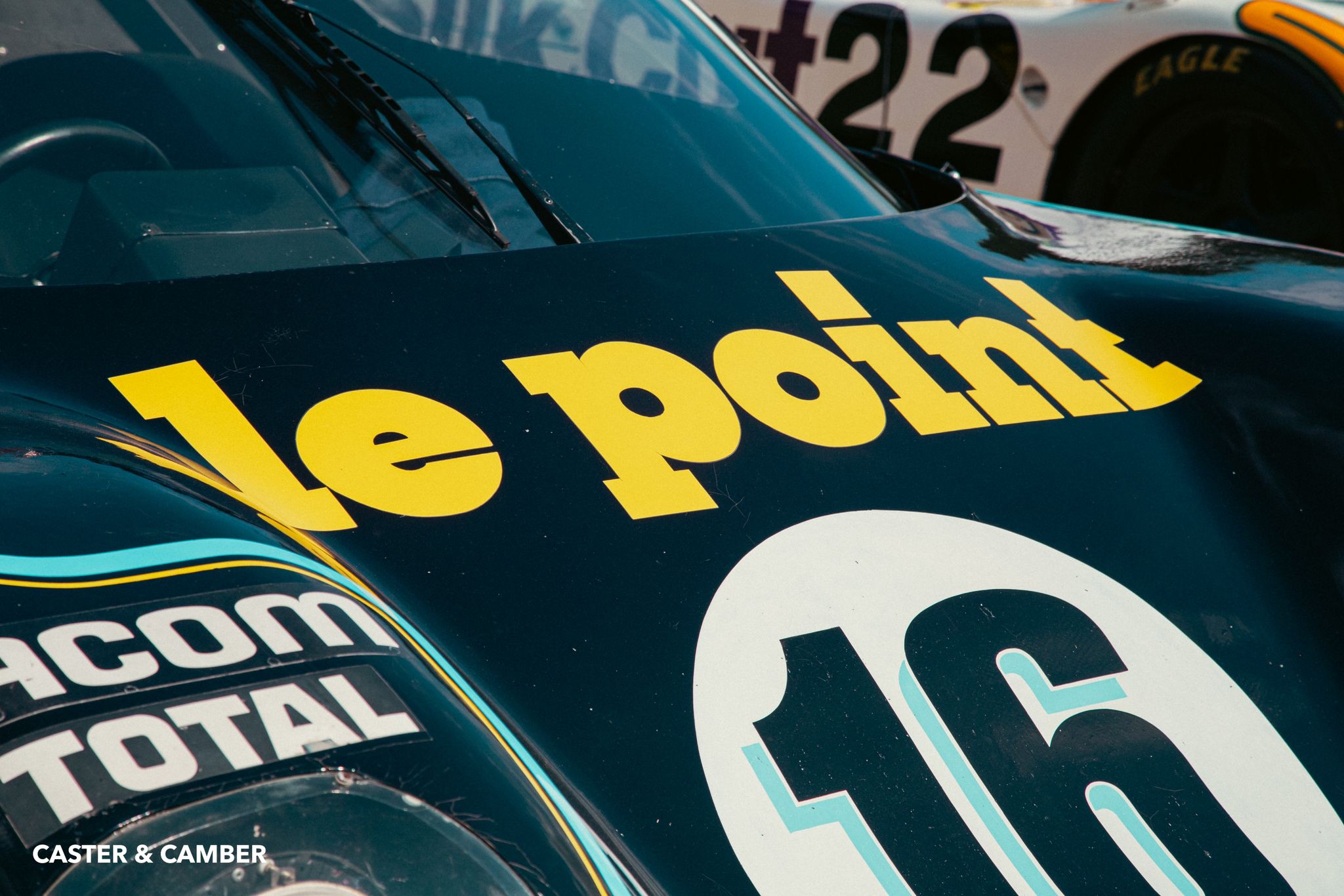

It’s now quite the jump, through the 1980s and 1990s, through the Group C era and all of that to a car that holds a very special place to me personally, because this is the first car I saw win Le Mans.
Growing up in the Middle East, we would occasionally get some European sports channels. Mainly it was football (which I couldn’t play or understand), the odd cricket match (if we were lucky) and the big F1 races (this was before the Abu Dhabi Grand Prix). It was 2003, and I managed to catch a sight of a green car with a Union Jack on it, cross the line at the greatest race on earth.
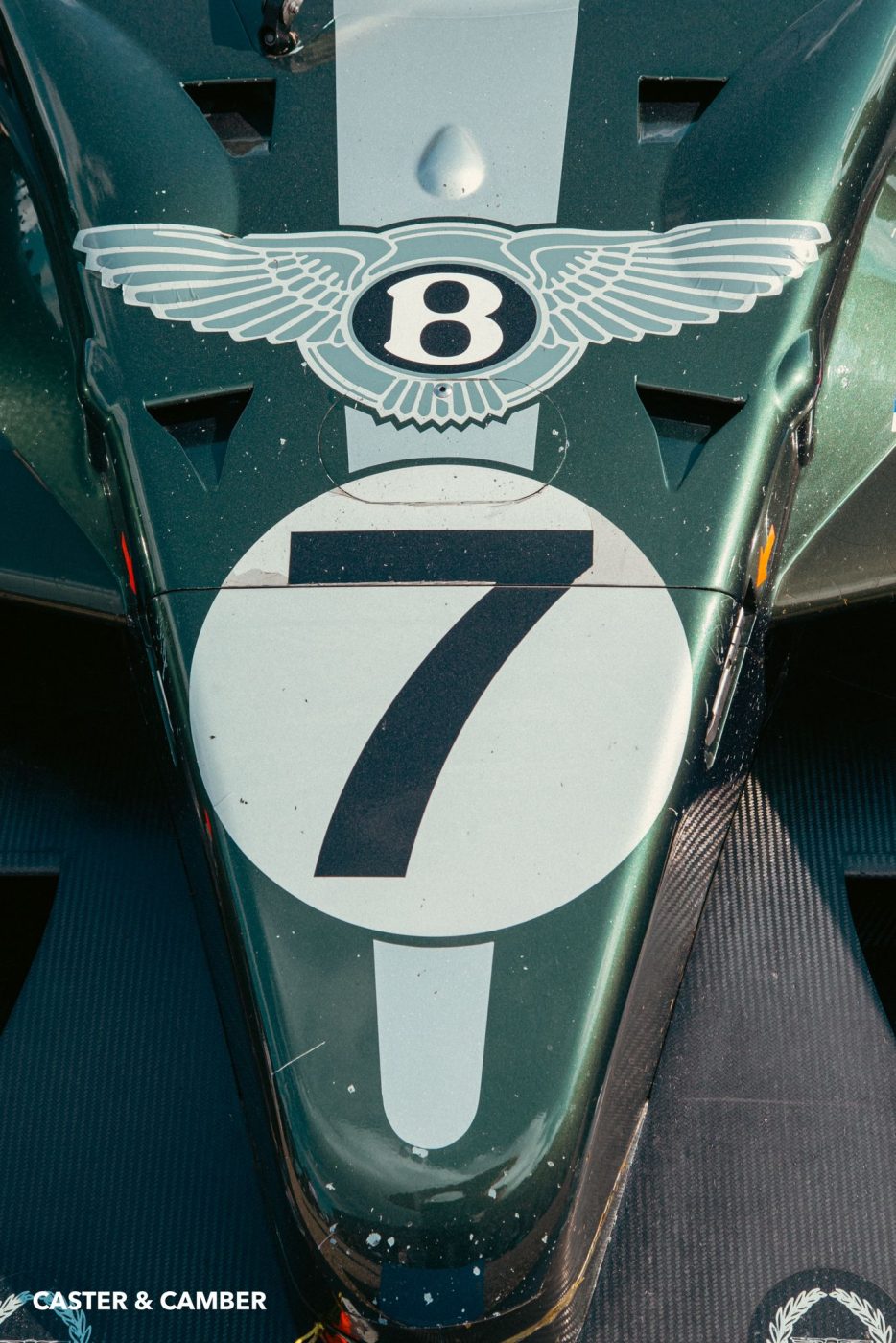
We mentioned before ‘Old Number 8’, the 3-litre Bentley which had won Le Mans back in 1924, well I was watching this cars successor cross the line with a modern interpretation of everything it represented. The Speed 8 ‘Number 7’.
After a 70 year break from the sport, and under the new ownership of Volkswagen, Bentley had worked to develop a car which could bring back that glory to the marque and its heritage. Driven by Guy Smith, Tom Kristensen and Rinaldo ‘Dindo’ Cappello, Number 7 would cross the line before my 10-year old eyes and make me completely, totally and unashamedly fall in love with this ballet of performance, this poetry in motion, this theatre of noise, speed and skill which lasts until this day and remains as true as I write these words as that day I opened the book at my school Book Fair.

